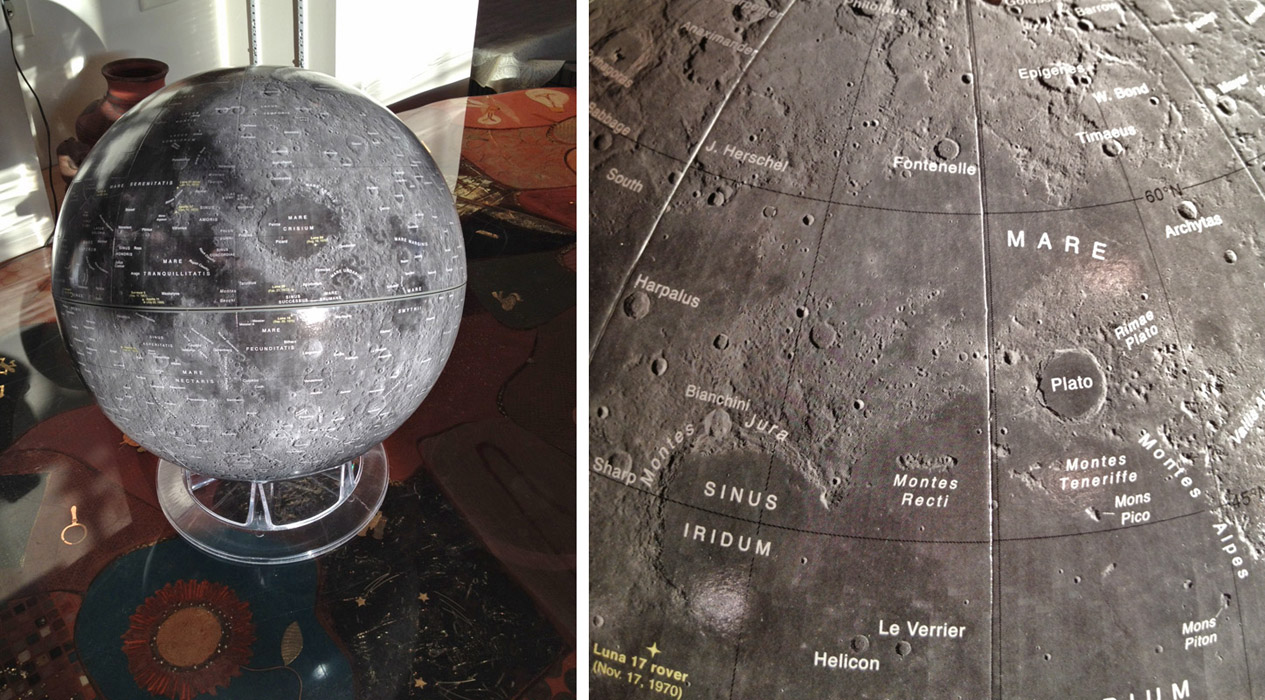

This effect is caused by air moving through the atmosphere of our planet, and the greater the turbulence the worse the views. If you look at the Moon with a telescope you may also notice the surface appears to gently wobble or sometimes even shimmer. Through a refractor or compound instrument, the Moon will appear flipped west to east, while through a reflector the image will be inverted. The view you have of the Moon through a telescope will differ from what you see with the naked eye or binoculars depending on its optical arrangement. Upping magnification by using shorter focal length eyepieces will get you in closer and give you opportunity to 'roam' around the lunar landscape. At low magnifications, the amount of detail visible is breath-taking, especially close to the terminator where relief shadows really help to emphasise the detail. The smallest craters you'll be able to pick out will depend on how still you can hold your binoculars, but a pair of 7x50s should comfortably reveal features down to about 50km across.Ī telescopic view of the Moon is amazing and one that never gets old. Binoculars increase the detail you'll see: as well as dark seas, you'll now be able to spot individual craters and large mountain ranges, especially when they are close to the terminator.
#Sky and telescope moon globe full
With the naked eye it's easy to see the progression of lunar phases, full disc effects such as earthshine and the major lunar seas. Taken together, this libration allows us to see a total of 59 percent of the Moon's globe, revealing tantalising features normally hidden from view. This gives us an opportunity to peek over the top, and under the bottom, of the Moon over time. The orbit is also slightly inclined, and this causes it to sometimes appear above the Earth's orbital plane and sometimes below. This small variation is enough to cause the Moon to 'nod' back and forth on its axis, giving us an occasional chance to see a little more around its eastern and western edges. When closest it speeds up slightly when more distant it slows down.

The Moon's orbit is elliptical, and as a result its distance from Earth does not remain constant. The nature of the Moon's orbit generates another effect that is a boon to lunar observers, a rocking and rolling motion that we call libration. Then the tables are reversed as the encroaching darkened hemisphere heads west with each passing day, until the diminishing crescent becomes lost in the pre-dawn twilight. Over the next 15 days the terminator slowly creeps across the lunar surface from east to west until the disc is fully illuminated at full Moon. Those further from the terminator show hardly any shadows and are harder to make out.Īt day zero of the lunar cycle - new Moon - the whole of the dark lunar hemisphere points towards Earth. This is the region where the Sun is either rising or setting, where crater rims and mountain peaks stand out in stark relief, casting inky black shadows across the lunar surface that exaggerate their presence. In general, the best time to view a given lunar feature is when the terminator, the demarcating line that separates lunar day and night, is nearby. While this is a good time to see the long, bright rays of ejecta surrounding prominent craters such as Tycho, the high altitude of the Sun in the lunar sky means no shadows are cast, resulting in a washed-out view of the Moon. You may be forgiven for thinking that full Moon is the best time to examine our close companion - not so. Though the same hemisphere faces Earth at all times, what you can see on the Moon changes from one night to the next. But the thing that surprises most novice observers is the variation it holds. The Moon is an ideal object to begin your observing odyssey because it is big, bright and covered with amazing detail. Check back each month for exciting articles from renowned amateur astronomers, practical observing tutorials, and much more! Explore the seas and craters that texture the lunar surface with our beginners' observing guide.
#Sky and telescope moon globe series
Orion is proud to partner with BBC Sky at Night Magazine, the UK's biggest selling astronomy periodical, to bring you this article as part of an ongoing series to provide valuable content to our customers.


 0 kommentar(er)
0 kommentar(er)
